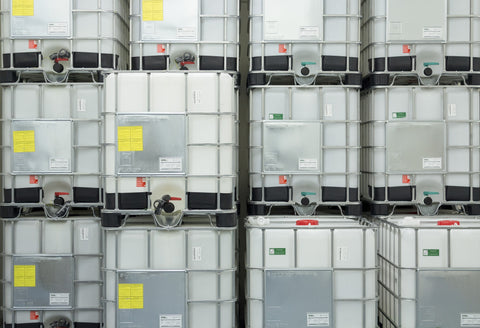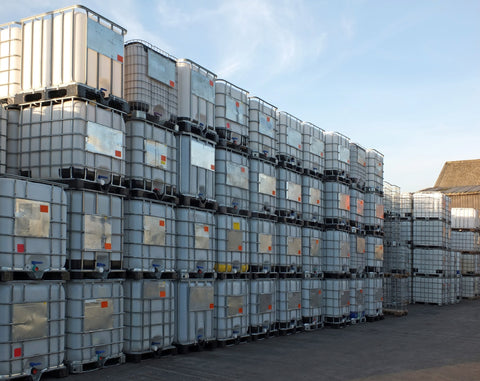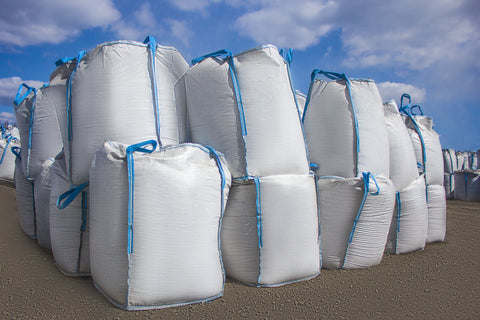The Essential Role of Viscosity in Vegetable Oil Management
The viscosity of vegetable oil plays a crucial role in various industries, from food science to manufacturing. The consistency of these oils, which encompasses a range from thin, like sunflower oil, to thicker varieties, like canola, dictates their application and efficiency. In this article, we explore an innovative approach to controlling this vital property: the heating of totes in large storage containers to manage vegetable oil viscosity.
Heating totes offer a practical solution to the challenges posed by fluctuating viscosities, especially in large-scale operations. Whether it's in the context of food preparation, where oils like soybean and rice bran oils are staples, or in industrial settings, maintaining the right viscosity is key to quality and efficiency. We'll delve into how this method enhances the properties of different vegetable oils, examining everything from their fatty acid composition to the impact of increasing temperature.
All About Vegetable Oils and Their Properties
Vegetable oils, integral to both our diets and a multitude of industrial applications, have unique characteristics largely influenced by their origin and composition. Here are some additional insights:

Diversity in Sources:
Vegetable oils are extracted from various plant sources, each offering distinct properties:
-
Palm Oil: Extracted from the fruit of oil palms, it's high in saturated fats, influencing its solidity at room temperature.
-
Olive Oil: Known for its monounsaturated fats, it's a staple in Mediterranean diets and is valued for its flavor and health benefits.
Processing Techniques:
-
Cold Pressing: This method retains most of the natural flavors and nutrients, but the oils produced have a shorter shelf life.
-
Refining: Refined oils are more stable and have a neutral taste, but this process can alter the fatty acid profile and nutritional value.
Nutritional Aspects:
-
Omega Fatty Acids: Many vegetable oils are rich in omega-3 and omega-6 fatty acids, which are crucial for heart health and reducing inflammation.
-
Vitamin Content: Oils like sunflower and soybean are high in vitamins E and K, playing a role in skin health and blood clotting.
Viscosity Variations:
-
Temperature Sensitivity: The viscosity of these oils can change significantly with temperature, affecting their use in cooking and industrial applications.
-
Role in Food Texture: In cooking, the viscosity of oil influences how it coats and absorbs into food, affecting the texture and flavor of the final dish.
Industrial Utilization:
-
Bio-Based Products: Beyond food, these oils are used in creating environmentally friendly lubricants, plastics, and biofuels.
-
Cosmetic Applications: Due to their moisturizing properties, oils like almond and coconut are used in skincare and haircare products.
Understanding the unique properties of different types of vegetable oils, from rice bran to soybean oil, is crucial in selecting the right oil for specific culinary or industrial purposes. Their fatty acid composition not only determines their health benefits but also their practical applications in various fields.
The Science of Viscosity in Vegetable Oils
Viscosity, a measure of a fluid's resistance to flow, is a key property of oils that affects their performance and usability. In the realm of food science and industrial processes, the viscosity of oil can be the difference between an efficient operation and a problematic one.
Kinematic viscosity, a specific measure of this property, is particularly relevant. It describes how fast the oil flows under the influence of gravity, a critical factor in flow measurement and applications involving direct contact with metal surfaces. Temperature plays a pivotal role here; generally, as the temperature increases, the viscosity decreases, allowing the oil to flow more freely.
Heating Totes as a Solution for Viscosity Control
To manage these changes in viscosity, especially at different temperatures, heating totes have emerged as a practical solution. These large containers, often used for storing and transporting oils, can be equipped with heaters to maintain the oil at a consistent temperature. This approach ensures that the oil heating process is controlled, enhancing the oil's oxidative stability and preserving its quality.
The application of heat in this manner allows for precise control over the oil's properties, ensuring it remains at an optimal viscosity for its intended use. Whether for foods involving frying or for industrial processes, such control is invaluable.
Practical Applications in Food Chemistry and Industry
In the realm of food chemistry, the viscosity of oil is a cornerstone, particularly in practices like frying and baking. In these culinary processes, the right viscosity is critical for efficient heat transfer, ensuring food cooks evenly and absorbs the right amount of oil. This balance is crucial not just for the flavor and texture of vegetable oil, but also for nutritional quality, impacting factors like the absorption of fats and moisture content in foods.
Beyond the kitchen, vegetable oils find extensive use in various industries. In the cosmetics and pharmaceutical sectors, oils such as soybean and canola are used for their emollient properties, with their viscosity playing a key role in the texture and spreadability of creams and ointments. Similarly, in the production of soaps and detergents, the viscosity of oil affects the end product's consistency and cleansing efficiency.
In the manufacturing sector, vegetable oils are employed as bio-lubricants and coolants due to their low toxicity and renewable nature. Here, maintaining the appropriate viscosity is essential for the effective lubrication of machinery, which can vary greatly depending on the operation temperature and the mechanical stress involved. Oils with too high a viscosity can lead to increased energy consumption and wear, while those with too low a viscosity might fail to provide adequate lubrication.
Additionally, vegetable oils are increasingly used in the production of biodegradable plastics and biofuels. In these applications, the viscosity of the oil can influence processing methods and the quality of the final product. For instance, in biofuel production, the viscosity of the oil impacts the fuel's flow properties and combustion efficiency.
Heating the container holding the oils can help maintain a proper pouring point and allow for the overall processing to go more smoothly. It offers a way to ensure this consistency. By maintaining oils at selected temperatures, they ensure that the viscosity of the oil remains constant, which is vital for both food quality and industrial efficiency. This consistent viscosity is not just about maintaining product quality; it's also about ensuring safety and sustainability in these wide-ranging applications. Whether it's ensuring that a fried food absorbs the right amount of oil for taste and health or guaranteeing that a bio-lubricant operates effectively under high temperatures, controlled viscosity is key to performance and reliability.
FAQs
What is the viscosity of oil?
The viscosity of oil varies widely depending on the type of oil and its temperature. Viscosity is a measure of a fluid's resistance to flow. Oils can range from low viscosity, like water, to high viscosity, like honey. For example, motor oils are typically more viscous than vegetable oils. The specific viscosity of an oil is often given in centipoise (cP) at a particular temperature.
| Oil | Viscosity (cP) | Temperature (°C) |
|---|---|---|
| Canola oil | 46.2 | 30 |
| Coconut Oil | 30 | 38 |
| Coconut oil | 55 | 24 |
| Corn oil | 30 | 60 |
| Cottonseed oil | 60 | 20 |
| Olive oil | 40 | 38 |
| Olive oil | 56.2 | 26 |
| Peanut oil | 38 | 38 |
| Peanut oil | 40 | 40 |
| Sesame oil | 60 | 20 |
| Soya bean oil | 60 | 20 |
| Sunflower oil | 48.8 | 26 |
What is the viscosity of food-grade oil?
The viscosity of food-grade oils, such as vegetable, olive, or canola oil, also varies. These oils generally have lower viscosities compared to industrial oils. The exact viscosity depends on the type of oil and its temperature. For instance, olive oil has a lower viscosity at higher temperatures and becomes thicker as it cools.
What is the viscosity of canola oil?
The viscosity of canola oil at room temperature (around 30°C or 86°F) is approximately 46 centipoise (cP). However, this value can change with temperature; as the temperature increases, the viscosity decreases.
What is the viscosity of olive oil?
Olive oil's viscosity is slightly higher than that of canola oil. At room temperature, it's around 84 centipoise (cP). Like other oils, its viscosity decreases with an increase in temperature.
Does vegetable oil go rancid when heated?
Vegetable oil can go rancid when heated, but this typically happens over prolonged periods or at very high temperatures. Rancidity in oils is caused by oxidation, a process that is accelerated by heat, light, and exposure to air. When oils go rancid, they develop an off smell and taste. To prevent rancidity, it's important to store oils properly and not overheat them during cooking. Additionally, repeated heating of the same oil can increase the rate of rancidity.
The Impact of Controlled Viscosity in Vegetable Oil Applications
In conclusion, the heating of totes presents a sophisticated and effective method for controlling the viscosity of vegetable oils. This practice is crucial in maintaining the quality and efficiency of oils across various applications, from cooking to industrial uses. By understanding and manipulating the viscosity of these oils, we can enhance their performance, ensuring they meet the specific needs of each application.







